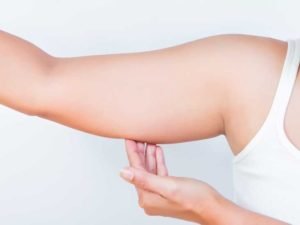We all know it, even though we don’t admit it, we have only indulged in physical exercises a little only. People make excuses for why another biscuit/doughnut/glass of wine/packet of crisps etc. needed an extra boost.
You knew, for example, that the second cheesecake aid was bound straight for your thighs, but you didn’t care until you tried to fit the same thighs into your normal jeans and found that they were shrinking in the wash all of a sudden.

It is time you look at yourself and, yes, your waist maybe a little more generous than you remember. Or maybe when you stomp your foot, there’s just the hint of a wobble above the knee?
Apart from the old thing, “can you pinch more than an inch”-which is unlikely anyway-how can you know how much fat you have?
What we all ought to figure out is how body fat can be assessed. And you will find ways of coping with it if you know what the issue is.
The Different Ways Of Calculating Body Fat And Muscle Mass:
Let us have a look at the best ways to help you calculate the body fat and muscle mass:
- The Toes Test

This one-second test involves no equipment and can be completed at home by anyone. Stand up straight and look down at the floor.
Can you see your toes without bending over? You should definitely lose a few pounds if you can’t!
- Body Mass Index (BMI)

This is the most frequently used indicator of whether weight loss is required. The BMI is simple to calculate, with some bathroom scales and a tape measurement all you need.
Weigh in kilograms, and measure your height in meters (in bare feet). Then, by dividing your weight by your square height, you can measure your own BMI.
Alternatively, plenty of recreation centers, doctors’ surgeries, pharmacy shops, and blogs have charts where you can look up your BMI once you know your height and weight. Y
our BMI should be between 20 and 25 if you are a good weight. More than that, and it needs some movement.
- Waist to Hip Ratio (WHR)

A tape measure is all you need for this one. WHR contrasts the fat around your middle with the fat on your hips, and instead of a thick waist, having large hips is better.
So hooray for being shaped like a pear! Measure the waist at its smallest and the hips at their widest, and separate the hips by the waist.
Females should aim for a WHR of 0.8, or less and males should aim for a WHR of 0.95 or less. The closer your WHR is to or greater than 1.0, the more you need to worry.
There are health consequences for having lots of fat around the middle, aside from weight problems, mostly because it can mean that the vital organs are fat covered.
Also Read How Does Okinawa Flat Belly Tonic Powder Work?
- Body Parts Calculation

It’s probably not as enjoyable as it sounds.
There are two ways to measure body fat in a hands-on way: with either a tape measure or a pair of calipers, but the technique of the tape is not as precise as the technique of the caliper.
But they will both give you an average body fat percentage.
The tape method relies on the measurement of your elbow, forearm, waist, hips, thigh, and calf circumferences.
These figures, or some of them, along with your age, weight, and gender, are used to determine your fat percentage.
The technique is described in many books and is available on different websites to try out, where you input the necessary numbers, and the answer appears.
Jakob Ain is a leading functional-medicine expert and a Doctor of Chiropractic. He received his doctorate from Southern California University of Health Sciences and is currently based in Pittsburgh, PA. Jakob Ain specializes in clinically investigating underlying factors of chronic disease and customizing a functional medicine approach for thyroid issues, autoimmune conditions, hormonal imbalances, digestive disorders, and brain problems.
Leave a Reply
You must be logged in to post a comment.